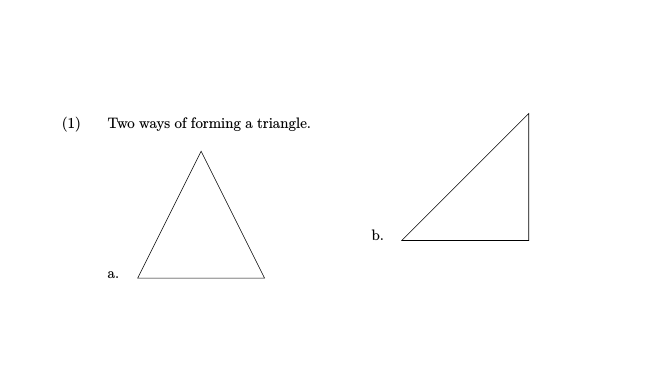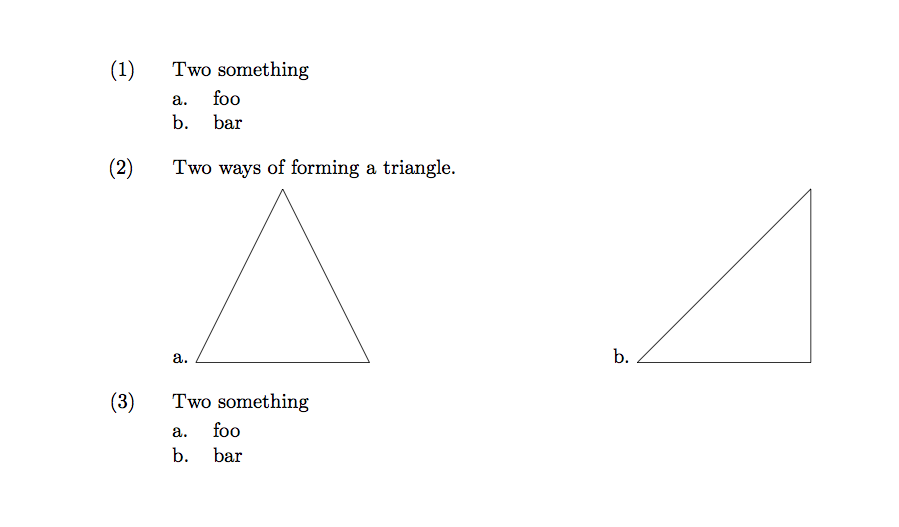निरंजन

This is my code.
```
\documentclass{article}
\usepackage{multicol}
\usepackage{linguex}
\usepackage{tikz}
\begin{document}
\begin{multicols}{2}
\ex. Two ways of forming a triangle.\\
\a.\begin{tikzpicture}
\draw (0,0) -- (-1.5,-3) -- (1.5,-3) -- cycle;
\end{tikzpicture}\\
\columnbreak
\b.\begin{tikzpicture}
\draw (0,0) -- (3,0) -- (3,3) -- cycle;
\end{tikzpicture}\\
\end{multicols}
\end{document}
```
It generates -

I want the `ex.` to be out of the `multicols` environment, because in the output the example `b.`, because I want both `a.` and `b.` to be on the same height. How to achieve it?
PS - I tried `\phantom{\ex.}` but it doesn't work.
Top Answer
samcarter

I suggest to use the `enumitem` package to place multiple subitems in a single line. You don't need to be worried about suspending and restarting the linguex counter because you could just place the the additional `enumerate` environment between your `\ex.` ones.
```
\documentclass{article}
\usepackage{multicol}
\usepackage{linguex}
\usepackage{tikz}
\usepackage[inline]{enumitem}
\begin{document}
\ex. Two something
\a. foo
\b. bar
\begin{enumerate}[label={(\arabic*)},labelsep=\Exlabelsep\relax,labelwidth=\Exlabelwidth]
\setcounter{enumi}{\value{ExNo}}
\item \hspace{0.6em}Two ways of forming a triangle.
\begin{enumerate*}[label={\hspace{-0.9em}\alph*.}]
\item
\begin{tikzpicture}
\draw (0,0) -- (-1.5,-3) -- (1.5,-3) -- cycle;
\end{tikzpicture}
\hspace*{\fill}
\item
\begin{tikzpicture}
\draw (0,0) -- (3,0) -- (3,3) -- cycle;
\end{tikzpicture}
\end{enumerate*}
\end{enumerate}
\stepcounter{ExNo}
\ex. Two something
\a. foo
\b. bar
\end{document}
```

Answer #2
CrazyHorse

If there are only two or three items then simply write the `a.`, `b.`, ... by yourself without the commands:
```
\documentclass{article}
\usepackage{linguex}
\usepackage{tikz}
\begin{document}
\ex. Two ways of forming a triangle.\\
a. \begin{tikzpicture}
\draw (0,0) -- (-1.5,-3) -- (1.5,-3) -- cycle;
\end{tikzpicture}
\qquad
b. \begin{tikzpicture}
\draw (0,0) -- (3,0) -- (3,3) -- cycle;
\end{tikzpicture}
\end{document}
```
